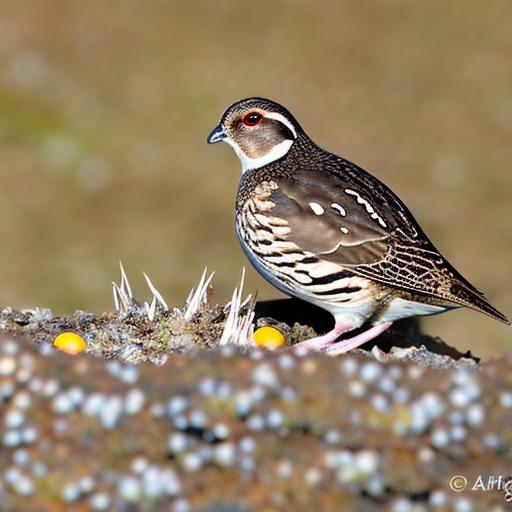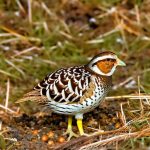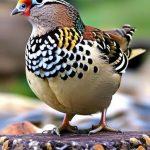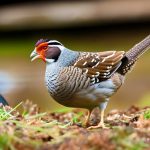Japanese quail, also known as Coturnix quail, are small birds that are commonly raised for their meat and eggs. They are native to East Asia and have been domesticated for thousands of years. Japanese quail are popular among farmers and homesteaders due to their small size, low maintenance, and high productivity. They are also known for their fast growth and early maturity, making them a profitable option for those looking to raise poultry.
Japanese quail are known for their adaptability to various climates and environments, making them suitable for both backyard and commercial production. They are also relatively quiet birds, making them a good choice for urban or suburban settings where noise may be a concern. Japanese quail come in a variety of colors, including brown, white, and speckled, adding to the visual appeal of raising these birds. Overall, Japanese quail are a popular choice for those looking to raise poultry for meat and eggs due to their small size, low maintenance, and high productivity.
Key Takeaways
- Japanese quail are small, hardy birds that are easy to raise and are known for their high egg production.
- When housing Japanese quail, it is important to provide them with enough space, proper ventilation, and protection from predators.
- A balanced diet for Japanese quail should include a high-quality commercial feed, supplemented with fresh greens and occasional treats.
- Regular health checks, proper sanitation, and prompt treatment of any illnesses are essential for managing the health of Japanese quail.
- Breeding and incubating quail eggs require careful monitoring of temperature and humidity, as well as proper handling and storage of eggs.
Housing and Enclosure Requirements
When it comes to housing Japanese quail, it’s important to provide them with a safe and comfortable environment that meets their specific needs. Quail can be housed in a variety of structures, including cages, hutches, or aviaries, depending on the scale of production and available space. The housing should provide protection from predators, adequate ventilation, and protection from the elements.
For commercial production, quail are often housed in wire cages with a solid floor to prevent injury to their feet. The cages should be spacious enough to allow for natural behaviors such as dust bathing and wing flapping. For backyard production, a small hutch or aviary with a secure roof and walls can provide a suitable environment for quail. It’s important to provide at least 1 square foot of space per bird to prevent overcrowding and reduce stress.
In addition to the housing structure, it’s important to provide bedding material such as straw or wood shavings to absorb waste and provide a comfortable surface for the quail to walk on. Regular cleaning and disinfection of the housing is essential to prevent the spread of disease and maintain a healthy environment for the quail.
Feeding and Nutrition
Proper nutrition is essential for the health and productivity of Japanese quail. A balanced diet should include a combination of commercial quail feed and supplemental treats such as fruits, vegetables, and mealworms. Commercial quail feed is formulated to meet the specific nutritional needs of quail and is available in both crumble and pellet form.
In addition to commercial feed, it’s important to provide access to clean water at all times. Quail are small birds with high metabolic rates, so they require frequent access to water to stay hydrated and maintain optimal health. Water should be provided in shallow dishes or nipple drinkers to prevent spills and contamination.
Supplemental treats such as fruits, vegetables, and mealworms can be offered in moderation to provide variety in the diet and prevent boredom. It’s important to avoid feeding quail foods that are high in salt, sugar, or fat, as these can lead to health problems such as obesity and heart disease.
Health and Disease Management
Maintaining the health of Japanese quail is essential for ensuring their productivity and well-being. Regular observation of the birds is important for early detection of any signs of illness or injury. Common signs of illness in quail include lethargy, decreased appetite, abnormal droppings, and respiratory symptoms.
Preventative measures such as vaccination and biosecurity protocols can help reduce the risk of disease outbreaks in quail flocks. It’s important to work with a veterinarian who is knowledgeable about poultry health to develop a comprehensive health management plan for the quail.
In addition to preventative measures, it’s important to have a plan in place for treating any sick or injured birds. This may include isolating affected birds, administering medication as directed by a veterinarian, and providing supportive care such as heat lamps or electrolyte solutions.
Regular cleaning and disinfection of the housing and equipment is essential for preventing the spread of disease in quail flocks. It’s important to use disinfectants that are safe for use around poultry and follow proper dilution and application guidelines.
Breeding and Incubation
Breeding Japanese quail can be a rewarding aspect of raising these birds, whether for personal enjoyment or commercial production. Quail reach sexual maturity at around 6-8 weeks of age, making them early breeders compared to other poultry species. Breeding pairs should be selected based on traits such as size, color, and productivity to produce offspring with desirable characteristics.
Quail eggs can be collected daily and stored in a cool, humid environment until enough eggs have been gathered for incubation. Incubation typically takes 17-18 days, during which time the eggs should be turned several times a day to ensure proper development.
Once the eggs hatch, the chicks should be provided with a warm, draft-free environment and access to clean water and chick starter feed. It’s important to monitor the chicks closely during the first few weeks of life to ensure they are growing and developing normally.
Egg Collection and Handling

Collecting and handling quail eggs requires care and attention to ensure they remain clean and free from damage. Quail are prolific layers, with each hen capable of producing several eggs per week. Eggs should be collected daily to prevent them from becoming soiled or broken.
When collecting eggs, it’s important to handle them gently to prevent damage to the delicate shells. Eggs should be stored in a cool, humid environment with the pointed end facing downward to help maintain freshness.
Proper egg handling practices are essential for maintaining egg quality and reducing the risk of contamination. It’s important to wash hands thoroughly before handling eggs and to clean any soiled eggs with a mild detergent before storage.
Marketing and Selling Quail Eggs
Quail eggs are becoming increasingly popular among consumers due to their unique flavor and nutritional benefits. Marketing quail eggs can be done through various channels such as farmers’ markets, specialty grocery stores, or direct sales to restaurants and caterers.
When marketing quail eggs, it’s important to highlight their nutritional value, small size, and versatility in cooking. Quail eggs are often sought after by consumers looking for gourmet ingredients or those with dietary restrictions who may be unable to consume chicken eggs.
In addition to marketing the eggs themselves, it can be beneficial to educate consumers about the benefits of raising quail for eggs, such as their small size and low maintenance requirements. Providing information about the humane treatment of the birds and sustainable farming practices can also help attract environmentally conscious consumers.
Overall, marketing quail eggs requires creativity and persistence to reach potential customers and build a loyal customer base. By highlighting the unique qualities of quail eggs and providing exceptional customer service, producers can establish a successful market for their products.
If you’re interested in keeping Japanese quail for eggs, you might also want to learn about the egg-laying habits of geese. Understanding how many eggs geese lay can provide valuable insights into managing your poultry farm effectively. Check out this informative article on Poultry Wizard to gain a deeper understanding of geese breeding and egg production.
FAQs
What are Japanese quail?
Japanese quail, also known as Coturnix quail, are small birds native to East Asia. They are commonly raised for their eggs and meat.
What do Japanese quail eat?
Japanese quail are omnivorous and eat a diet that consists of commercial quail feed, seeds, grains, insects, and green leafy vegetables.
How many eggs do Japanese quail lay?
Japanese quail are prolific layers and can lay up to 300 eggs per year, with each egg weighing around 10-12 grams.
How do you keep Japanese quail for eggs?
To keep Japanese quail for eggs, you will need a suitable housing setup, proper nutrition, and a consistent lighting schedule to encourage egg production.
What is the ideal housing setup for Japanese quail?
The ideal housing setup for Japanese quail includes a well-ventilated coop or cage with clean bedding, access to fresh water, and protection from predators.
What are the benefits of keeping Japanese quail for eggs?
Keeping Japanese quail for eggs can provide a sustainable source of fresh, nutritious eggs, and can also be a rewarding hobby for those interested in poultry keeping.
Meet Walter, the feathered-friend fanatic of Florida! Nestled in the sunshine state, Walter struts through life with his feathered companions, clucking his way to happiness. With a coop that’s fancier than a five-star hotel, he’s the Don Juan of the chicken world. When he’s not teaching his hens to do the cha-cha, you’ll find him in a heated debate with his prized rooster, Sir Clucks-a-Lot. Walter’s poultry passion is no yolk; he’s the sunny-side-up guy you never knew you needed in your flock of friends!







